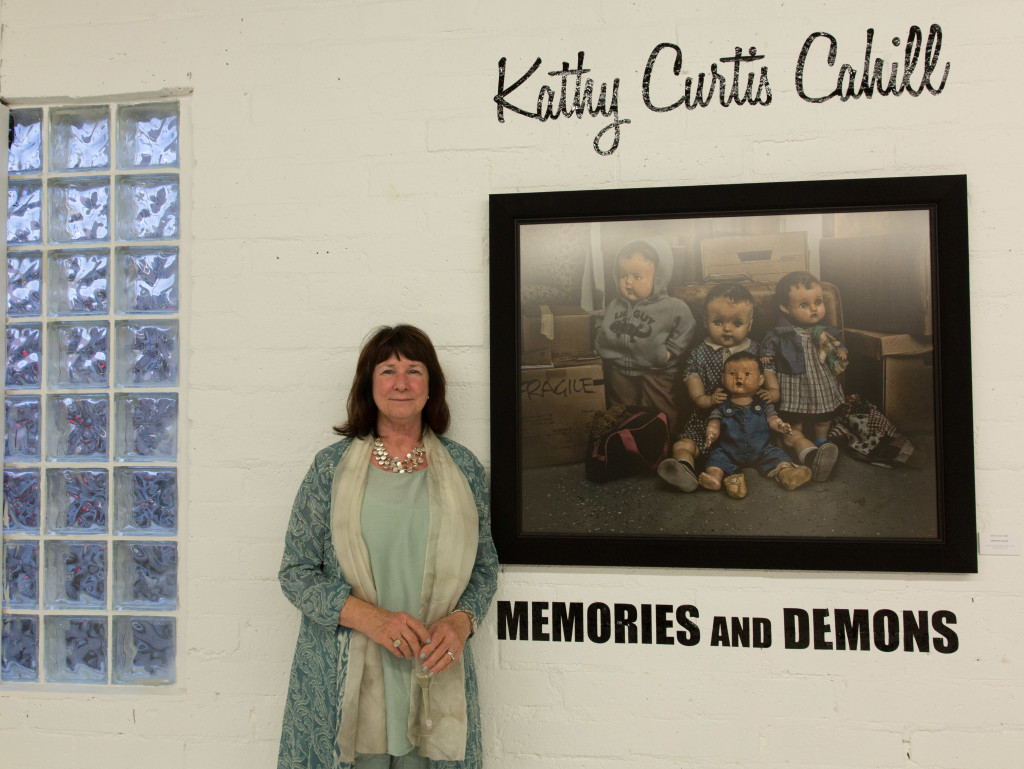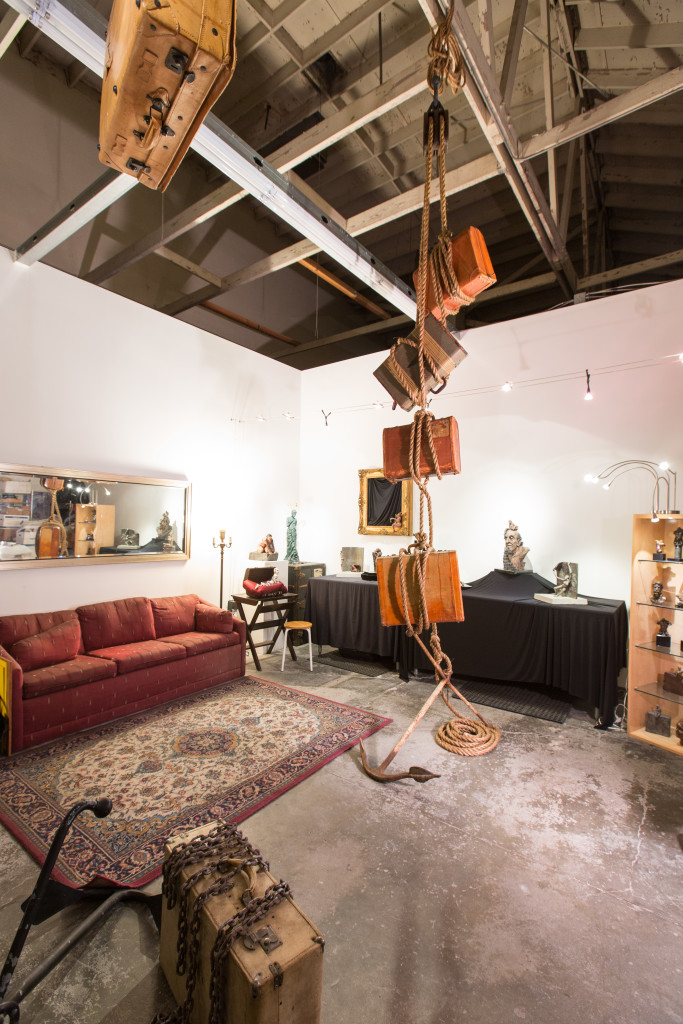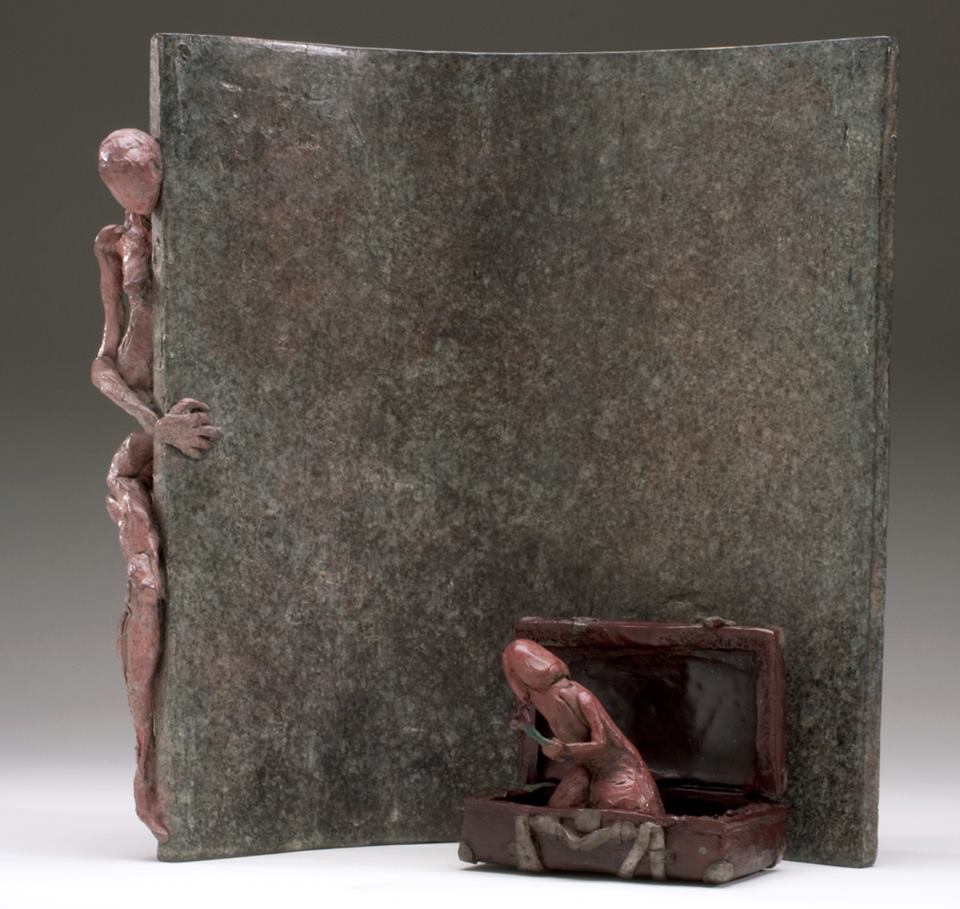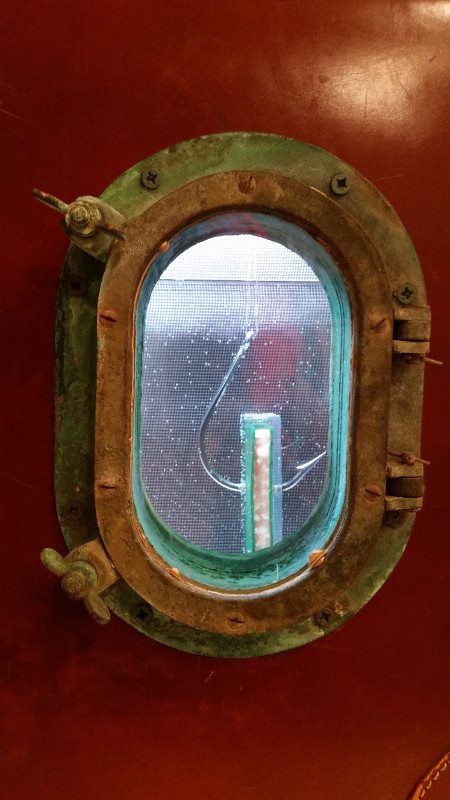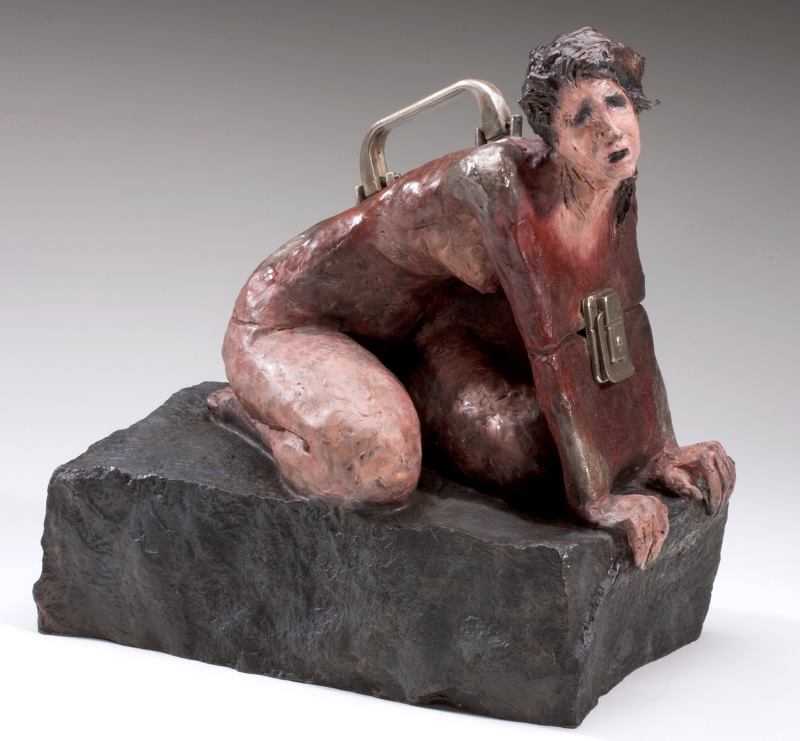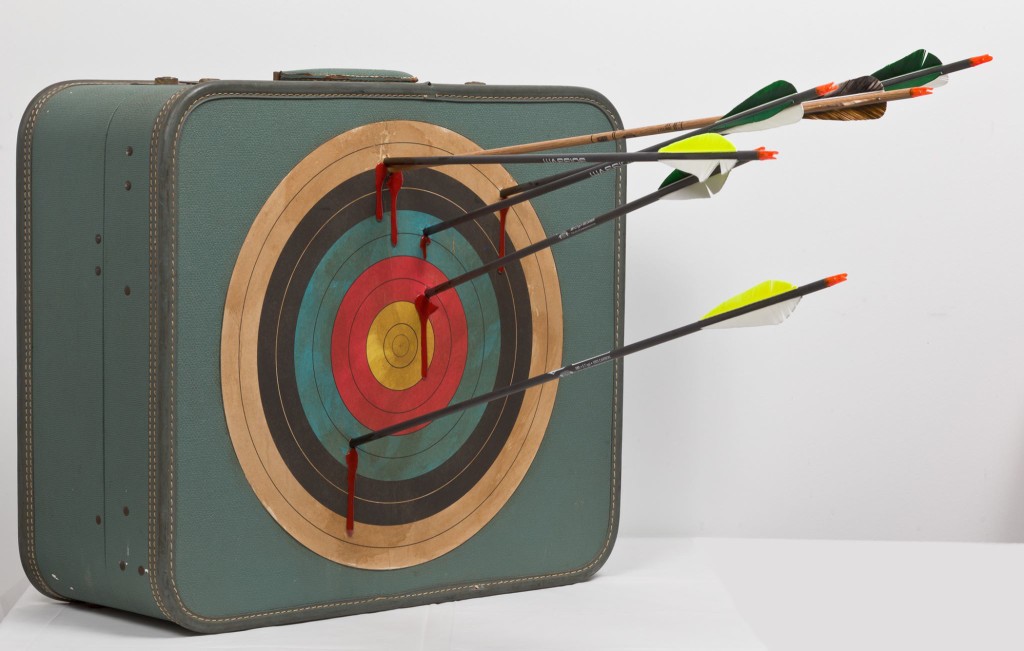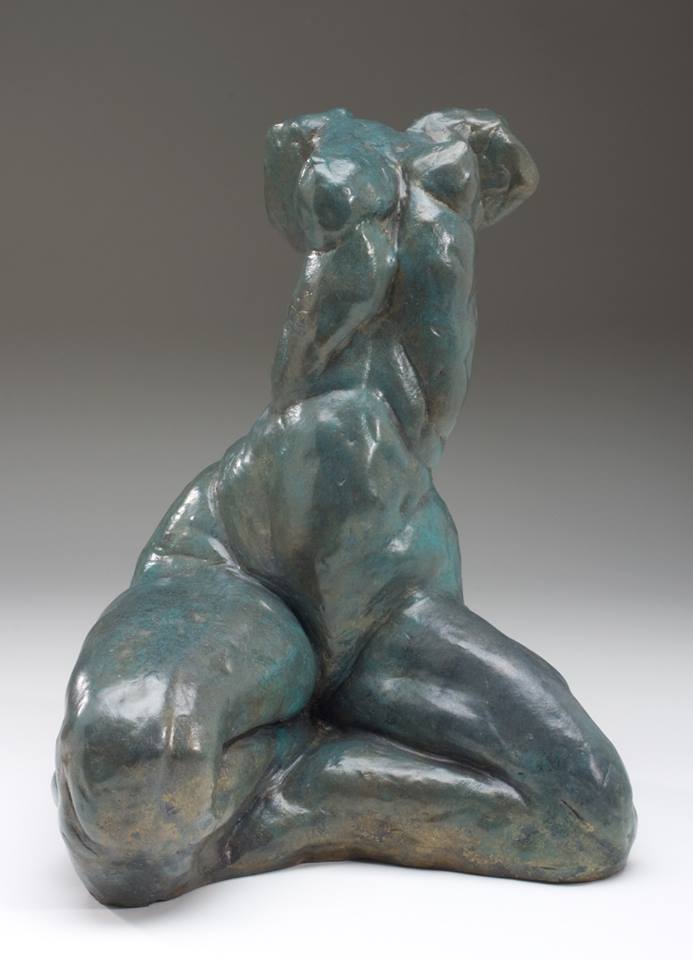
What’s on the line in artist Chenhung Chen’s buoyant, powerful art? Line itself. Chen focuses her art on the formation of line in drawing, Chinese calligraphy, and American Abstract Expressionism, filling her own pieces – drawings, sculptures, and 3D installations – with the yin and yang of harmony and dissonance.
Delicate and ephemeral are not often the words associated with recycled materials such as copper wires and components, but Chen’s work provides both. In pieces like “Moment to Moment,” and “Water” exhibited at the Studio Channel Islands Art Center, Chen’s all-important lines are curved, willowy, tangled, and buoyant. Their representational shapes are less important than the feeling they evoke, or as Chen puts it “the Formless is the quintessential subject of my art, but we only know it through form.”

A good example of this wonderfully formless form is Chen’s 3-D sculpture “Constellations.” The piece has the qualities of an amorphous jelly fish and the meshed patterns of a sky full of stars and the universe itself. The copper wire she uses becomes a living entity, each fine, entwined element joined to another like the stars in the sky. There is both a vastness and an intimacy in Chen’s work; a sense of motion in the swirls, whorls, and coils. Her “How do you spin your yarn?” are eight separate “yarn” balls crafted from wire, each one seeming to swirl out of itself, ready to be born as something else – perhaps something as prosaic as a sweater, or perhaps a life force ready to animate.

Chen says “I appreciate the linear qualities inherent in nature,” and in her work, line appears to be the starting point for life and energy. She describes her work as being “about the driving force for inner fulfilment, balance, meditative process…and experiencing the inner power.” To the viewer, it’s the dichotomy between belonging and aloneness, or as Chen puts it, between “‘wholeness’ or ‘the self,’” a twin force which pulses through her visually haunting pieces.
Chen crafts much of her work from wire and wood, plastic casing, paper, paper clips and staples. Her goal is “to make sense of objects’ function or contrast them” in a vital way. She works with hard technological elements such as wire and components, yet manages to transform these objects into something fluid and almost liquid.
Now living and working in Los Angeles, Chen was born in Beigang, Taiwan, and received degrees from the Chinese Cultural University, and the School of Visual Arts in New York City where she graduated with a Master of Fine Arts degree. A world traveler and non-profit volunteer, thematically Chen’s art focuses on a sense of external shape, force, and inner existence. Her internationally cultural background may influence the ideas of change and fluidity so redolent in the works she creates. In short: if one line leads to the next, that line is both tangled and filled with twists and turns in Chen’s work, a weaving of cultures and emotions, the stuff of life itself.
The artist will be participating in 2015 Annual Benefit Auction for the Los Angeles Art Association on August 1st, held at Gallery 825, in Los Angeles. This Summer National Juried Exhibition, is juried by Nancy Meyer, of the Marin Museum of Contemporary Art, in Novato, Calif.
The artist recently participated in Art of Our Century at the Woodbury Art Museum at Utah Valley University in Orem, Utah, featuring the work of western regional artists.
Other recent exhibitions included her Blackboard Gallery Studio Channel Islands Art Center solo exhibition, Dancing with the Formless; Kuwento Engkuwentro: Angeleno Folklore, Legends and Sidewalk Stories, held at El Pueblo de Los Angeles Historical Monument; the 53rd International Exhibition, at the San Diego Art Institute, San Diego; and Fusion, held at the Arc On-Line Gallery in San Francisco. As a part of a wide variety of group exhibitions in New York, California, and abroad, Chen’s art has been showcased in dozens of venues since beginning her career.
Chen describes her art overall as “about harmony and dissonance, peace and chaos, the beautiful and the grotesque, the subtle and the powerful. It’s also about the driving force for inner fulfillment, balance, meditative process, human internal structures, the transitional human condition, and experiencing the inner power.”
She began her art career formally in 2010, and attests to the fact that the desire to create art “must come from within. If one wants to be an artist, it’s because he or she needs to be one.”
An admirer of Cy Twombly’s paintings, Chen began painting in 3rd grade . Trained as a painter, she now works in diverse materials, and enjoys the challenge of working three-dimensionally, finding inspiration through a process of internal discovery, meditation, and life experience.
Currently working on her “Entelechy” series of sculptures, Chen recently moved into the Brewery Arts Complex in Los Angeles, where along with her own work and involvement in the art community, she enjoys cooking, gardening, and family time. And finding lines, lines, everywhere a line.
